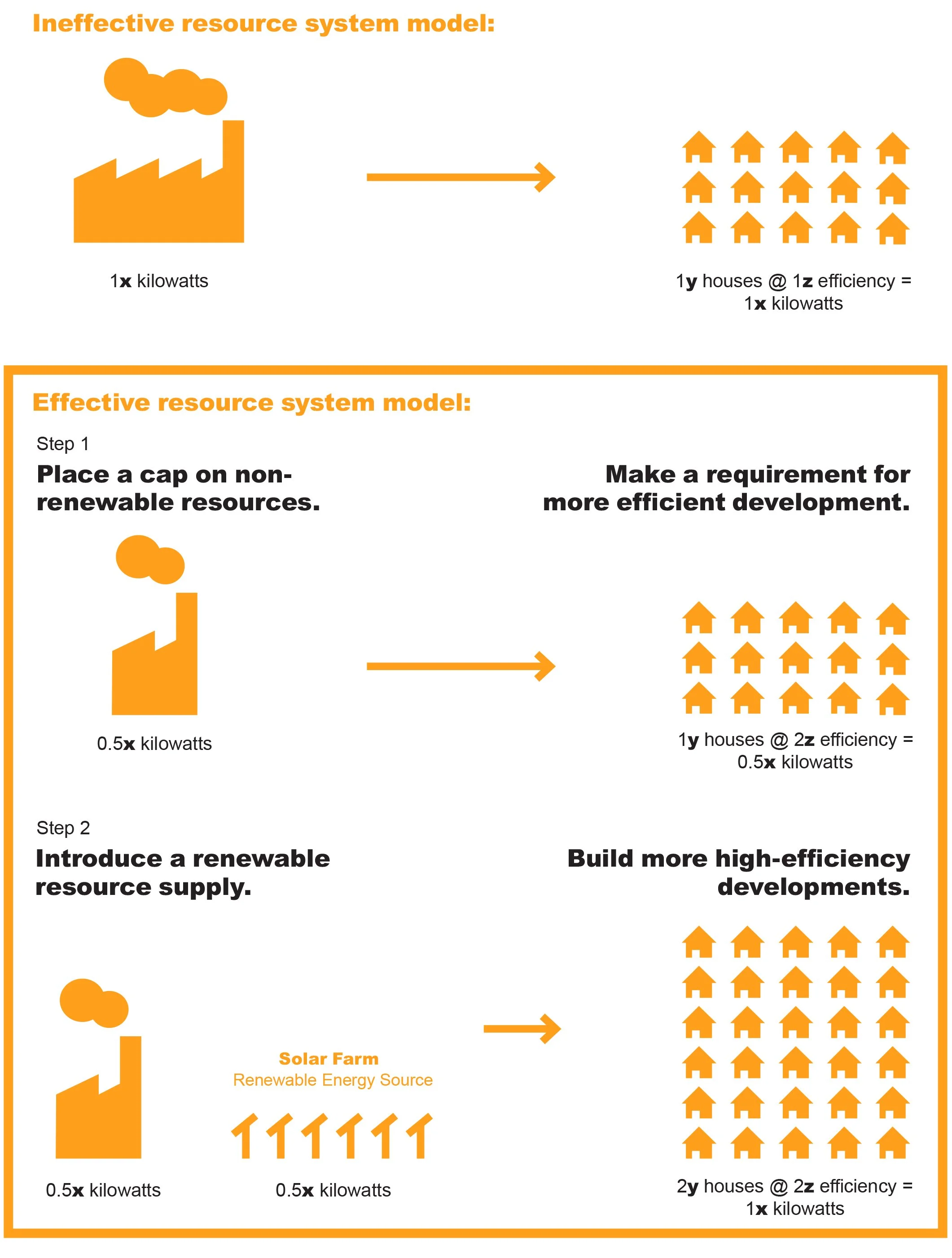The Problem with Peak Demand
Historically infrastructure, utilities and resources have been planned through demand modeling that follows development projections. The typical cycle is one in which development is proposed, quanta of development is calculated, and resources are applied based on the per unit peak demand, including a margin of safety factor.
Tracking Demand, Setting Supply
This process disincentivizes innovation and efficiency. Developers, public and private, demand that resources and supporting infrastructure are put in place to accommodate the least efficient projects operating at their highest demand, or peak periods. This creates a situation that wastes resources and stifles innovation.
As we hopefully move beyond land-use budgets as the prime tool for planning cities, this cycle should be reconsidered. If we want to incentivize sustainability and renewable resource generation and utilization, then a clear development strategy should be created and driven by efficiency of the utilization of these resources, and not by unsustainable conventional policies. In this system resources from transport to energy to water should be capped for development areas such that an appropriate low range development level can be achieved with current standards, but additional development can be accessed or entitled through increases in efficiencies across the spectrum of resource utilization.
If a developer can build investment housing that uses half the power and water needed in a typical, baseline project, and the residents can travel with no additional automobiles, then the quantum of development should be increased by the factor of resource efficiencies. Half the resource utilization should result in twice the development. However, this requires us to rethink the nature of capacity, of both population and infrastructure. In this scenario, no part of a city is ever deemed ‘at capacity’ as an absolute calculation because a case can and should be made that capacity can increase based on project efficiencies, not supply of resources.
Setting Capacity and Reducing Demand
In addition to this, renewable and sustainable resource production, whether power or water, for example, should be incentivized by providing for, or allowing, additional development. If conventional, petroleum or coal-based power is supporting a project then the baseline development quanta should be minimized. However, if the resources are renewable, or otherwise smart, then the baseline development quanta should be increased by a reasonable and appropriate factor, reflecting the benefit to the environment, as well as to the diversification of the economy.


